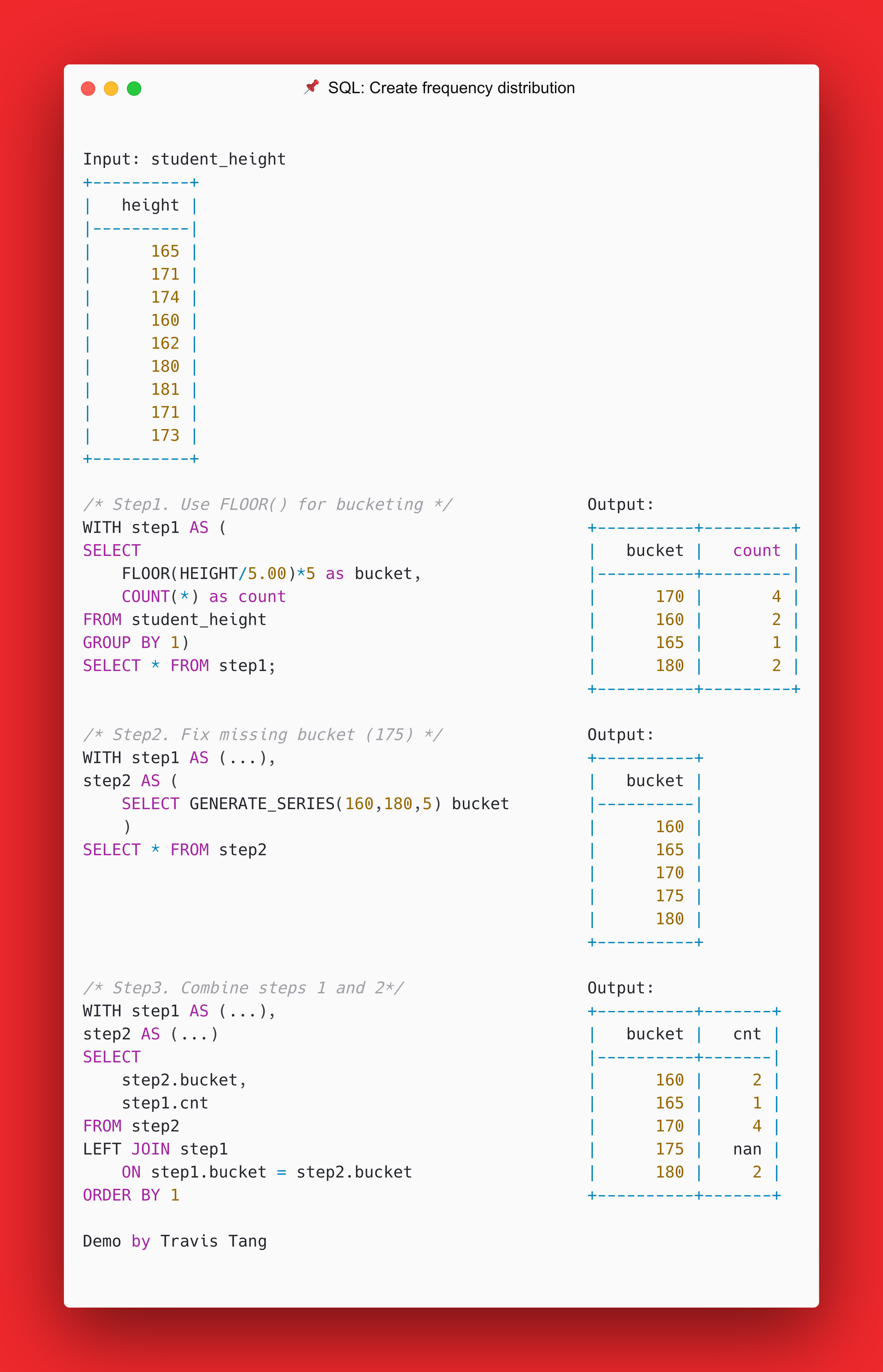Generate Histogram Distribution
For a quick exploration of the distribution
Exporting the data to python is cumbersome... use SQL to generate a frequency distribution for a quick exploration.
Here's how:
- Use 𝙵𝙻𝙾𝙾𝚁 to assign to buckets
- Fix missing bucket with 𝙶𝙴𝙽𝙴𝚁𝙰𝚃𝙴_𝚂𝙴𝚁𝙸𝙴𝚂
- Combine steps 1 and 2
Some caveats:
- Here, bucketing is done manually in a rather hacky way. Python's auto-bucketing is superior here.
- 𝙶𝙴𝙽𝙴𝚁𝙰𝚃𝙴_𝚂𝙴𝚁𝙸𝙴𝚂 is a PostgreSQL function. Its equivalent is also available in t-SQL, Redshift and Bigquery.
- Some dashboarding tools (Metabase) have built-in histogram visualization. You can use that instead if it's supported.




